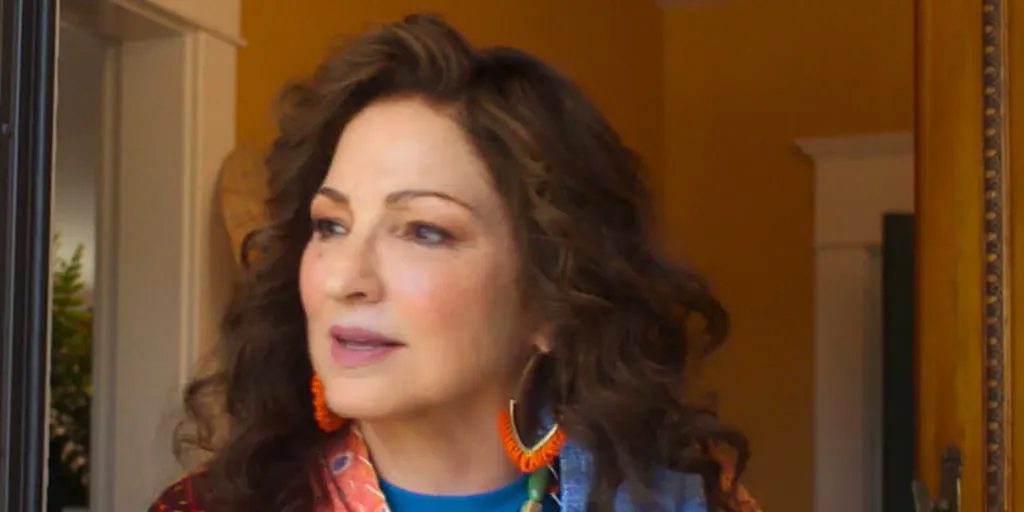She's widely known as the Queen of Latin Pop. And now, music legend Gloria Estefan wants to win over a new generation of fans as the loving grandmother in the much-anticipated "Gabby's Dollhouse: The Movie," based on the popular Netflix kids show.
"I love the element of the magic in the relationship between Gabby and her grandmother. I'm a grandma, and my grandson is the joy of my life," Estefan said in an interview with NBC News. "You can't forget about the magic that is created when you play."
The movie, which was released Friday, mixes live action and animation and follows Gabby (Laila Lockhart Kraner) and Grandma Gigi (Estefan), who go on a road trip that turns into an adventure to get Gabby's dollhouse back after it's taken by an eccentric cat lady named Vera (Kristen Wiig).
The DreamWorks Animation series that premiered in 2021 on Netflix drew 108 million views across all seasons in the first half of 2025. It was inspired by the success of trending cat videos and YouTube unboxings with children opening toys.
Estefan says that "Gabby's Dollhouse" can remind viewers how life is full of "unboxing experiences" that could reveal hidden stories.
The globally renowned music legend—a recipient of multiple honors and awards and the first Latina inducted into the Songwriters Hall of Fame—points to an example of an unboxing experience that shaped how she connected with music after her family had to leave their native Cuba.
"My grandma smuggled my mom's records in cases of [mango] baby food that she would send to me from Cuba," Estefan, who grew up in Miami, said, remembering how her mom's collection included albums from Nat King Cole, Dean Martin and Andy Williams.
"So music is where I first was immersed in the American culture," Estefan said.
While she was too young to remember Cuba, she said, her family's roots left an inescapable imprint on her identity.
"The Cuba that's in my heart and in my mind is the Cuba that my mother left behind, and my father left behind, and my grandparents. Which clearly is a different country right now," she said.
Estefan recalls her mother specifically playing a fundamental role in preserving that heritage.
"I grew up with that nostalgia that my mom thought we were going back," Estefan said. "So it was important to really keep our culture alive. And then when she saw we weren't going back, it became even more important."
She says that her mom had a PhD in education and was "a real stickler" about how they spoke Spanish at home. Estefan recalled how Spanish-language music planted the seed for her career as a singer.
"My mom says the only way she could put a diaper on me was to sing to me. And I would just like melt and stare at her. And even as a little girl, I would hear songs on the radio and they would stick," she said.
Estefan remembers singing two songs most: "La muerta," a dark song about a husband who kept the bones of his dead wife in an attic; and the Cuban revolutionary anthem, which her father -- a U.S. military veteran and police officer -- would discourage her from singing.
Nevertheless, music was a big part of her upbringing, and an enduring experience that reminds Estefan of life with her mom. She remembers singing songs from Joselito, a Spanish child star in the 1950s and 1960s who was nicknamed "The Little Nightingale." And her mom would play records from the late salsa legend Celia Cruz and the late Israel "Cachao" Lopez, considered the father of mambo.
"She would dance around the apartment and try to make life palatable and happy for me," Estefan said.
The Latin pop legend says that in addition to those early Spanish language songs, she was influenced by music in English. Carole King, Gerry and the Pacemakers, Stevie Wonder and Elton John were some of her favorites.
But The Beatles—and their hidden connection with popular Latin music—hold a special place for her hyphenated identity.
"The Brits were really into Latin music. In fact, Emilio (Estefan) and I bought the first microphone The Beatles ever recorded on at EMI for their first demo. And I guess that spoke to my little Cuban heart," she said.
Estefan explained that The Beatles recorded "Bésame Mucho," a famous romantic ballad from the 1940s, on that demo. Other Beatles songs "have that Latin perk," she said, which fans can sometimes overlook. She cited "Till There Was You" and "Do You Want to Know a Secret" as examples.
Fans know Estefan as one of the world's most successful crossover artists, who helped make Latin music popular during the 1980s and 1990s. But, she says, earlier crossovers from other Latin musicians helped open the door for her career.
"Ricky Ricardo was on TV singing in Spanish, Cuban music -- Afro Cuban music by the way," she said about the late, iconic "I Love Lucy" star Desi Arnaz.
"The Conga, Babalú -- that was very religious Cuban music, which was that fusion of the African root mixed with different European influences that had been in Cuba," she explained.
Looking at Latin music today, she describes the recent successes of The Buena Vista Social Club on Broadway and Bad Bunny's use of traditional Puerto Rican bomba y plena and salsa music as examples of "unboxing" older music traditions that connect younger mainstream Americans with older Latin influences.
"People want to dance, they want to have fun, they want to hear actual music, they want to hear instrumentation," said Estefan, who's celebrating 50 years in the music business. "Latin music definitely does that."
And through those tangible experiences, Estefan says, unboxing the influences of popular music can help fans tap into a nostalgia that recreates childlike excitement, which is one of the themes in "Gabby's Dollhouse."
